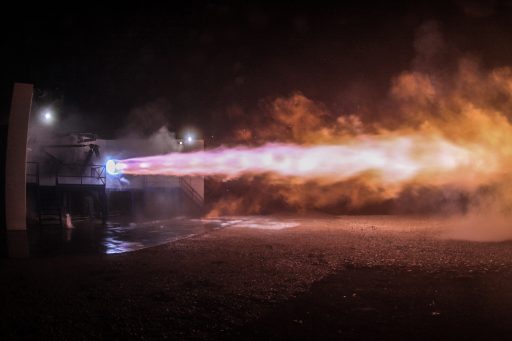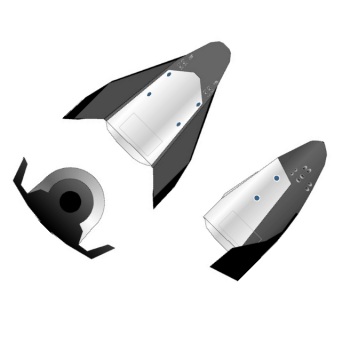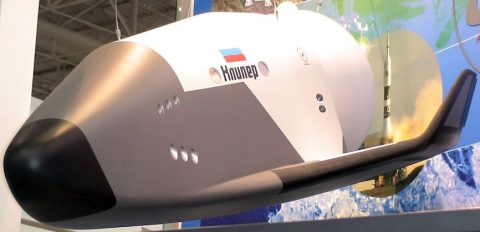New Mars Forums
You are not logged in.
- Topics: Active | Unanswered
Announcement
#1 2017-12-03 08:31:19
- louis
- Member
- From: UK
- Registered: 2008-03-24
- Posts: 7,208
Timeline milestones for a BFR Cargo landing on Mars in 2022.
Just wondered if people would like to offer views on a timeline so we can check progress towards Musk's stated objective of landing a cargo BFR on Mars in 2022.
Here are some key markers along the way:
Engine testing for BFR Complete by when? I understand the Raptor engines are already being tested.
Propellant/fuel tanks Complete development by when? I understand the prototype tank has been built.
Commence construction of BFR Musk has already stated 2018 - not sure if we have a more precise target date than that, though
Development of cargo landing techniques By what date does Space X need to have resolved all cargo landing techniques and procedure (e.g. presumably automated lift or inflatable chutes for offloading).
Propellant manufacturing When does the Mars ISRU propellant manufacturing system have to be finalised by?
Test flight to LEO 2020?
Test flights to Moon and back I am presuming before they fly to Mars they will have a test flight to Moon orbit - to test coms and so on. 2021?
Launch date Do we know what is the optimal launch date for a 2022 cargo landing?
Interested in people's thoughts on other milestones and on the key dates.
Let's Go to Mars...Google on: Fast Track to Mars blogspot.com
Offline
Like button can go here
#2 2017-12-03 08:54:37
Re: Timeline milestones for a BFR Cargo landing on Mars in 2022.
Regarding cargo offloading, there's a slide in Musk's presentations that shows a crane attached to the cargo door, way up high on the BFS, lowering a box to the surface. I suspect a similar device could be used to bring people up and down as well (perhaps on a platform).
Regarding all the milestones on the timeline, Musk has a reputation of being too optimistic. We're still waiting for the Falcon Heavy; we've been waiting since 2013. If he can't get the timeline to work, what are the chances we can? Our estimates will be very rough.
Offline
Like button can go here
#3 2017-12-03 10:59:07
- louis
- Member
- From: UK
- Registered: 2008-03-24
- Posts: 7,208
Re: Timeline milestones for a BFR Cargo landing on Mars in 2022.
I was hoping for a bit of crowd intelligence here...Musk must have a flow chart that ends in 2022. However optimistic, there must be such a flowchart. I am really just trying to work out what will be on it and what dates will be assigned.
I am much more optimistic than others here, my argument being that he has resolved a lot of the earlier issues e.g. propulsive landing, Raptor design, propellant tank prototype, launch technology and coms etc. There could be gremlins along the way, but maybe he'll get lucky NASA did for most of the Apollo series. NASA went from design to lunar orbit in about 5 years - in pre CAD days.
Regarding cargo offloading, there's a slide in Musk's presentations that shows a crane attached to the cargo door, way up high on the BFS, lowering a box to the surface. I suspect a similar device could be used to bring people up and down as well (perhaps on a platform).
Regarding all the milestones on the timeline, Musk has a reputation of being too optimistic. We're still waiting for the Falcon Heavy; we've been waiting since 2013. If he can't get the timeline to work, what are the chances we can? Our estimates will be very rough.
Last edited by louis (2017-12-03 10:59:42)
Let's Go to Mars...Google on: Fast Track to Mars blogspot.com
Offline
Like button can go here
#4 2017-12-03 11:13:09
- Oldfart1939
- Member
- Registered: 2016-11-26
- Posts: 2,488
Re: Timeline milestones for a BFR Cargo landing on Mars in 2022.
Considering that Musk hasn't even proceeded to a full scale mockup yet, I suspect that we'll see the first prototype in about 3 years, and that will require some ground testing, ground support infrastructure at Cape Canaveral construction, testing in Texas doing some hover tests, etc. "There's many a slip twixt the cup and the lip," to quote the Bard of Avon. And this is far more complex than drinking a tankard of ale...
Probably the Raptor engine development is proceeding apace his wishes. There has been some speculation elsewhere, that there may be a heavily modified Falcon 9 which incorporates the new engines and flies using CH4 and LOX, just as a proven flyable test bed for the new rocket motors. That to me, would seem to be prudent, in that it would also create a higher performance commercial launch vehicle, which could be extrapolated to a methane powered Falcon Heavy.
Offline
Like button can go here
#5 2017-12-03 11:22:14
- Oldfart1939
- Member
- Registered: 2016-11-26
- Posts: 2,488
Re: Timeline milestones for a BFR Cargo landing on Mars in 2022.
Louis-
This is merely idle speculation on my part, but there could be an engine test bed vehicle first stage built sooner, and that could be either a Falcon 9 first stage suitably modified for the change in fuel, or maybe even something bigger than the 3.7 meter diameter present size in order to incorporate more engines? This as I say, is entirely MY speculation based on industrial realities--not Elon's wishful thinking/dreams. Such a first stage could be a hover only unit to work out details of re-landing and takeoff. There is one helluva lot of engineering to be done as well as having factory space available in Hawthorne. There is still a huge flight manifest for Falcon 9 vehicles, and that's SpaceX's bread and butter. Hopes and dreams versus reality; difficult to accommodate at times!
Last edited by Oldfart1939 (2017-12-03 11:24:48)
Offline
Like button can go here
#6 2017-12-03 12:05:01
Re: Timeline milestones for a BFR Cargo landing on Mars in 2022.
I think there's more new technology here than you think, Louis. No one has ever built carbon fiber structures as large as the BFR before, let alone carbon fiber structures designed to handle cryogenics. For all we know, this may prove impractical, or at least for a multiple use vehicle (perhaps material fatigue or cracking occurs more quickly in that cryogenic and stress environment). The tanks will be self-pressurizing, and that's a new technology as well. Scaling up their experience with the Falcon to the BFR may not be as simple as we think. Then there's the biggie: orbital refueling. No one has done that before. They are still figuring that out. The 2016 presentation showed the fuel tanker docking side-to-side with the BFS; the 2017 presentation shows them docking bottom to bottom (where the engines are). That technology could take quite a while to refine. The BFS can't fly to Mars or the Moon without orbital refueling.
Offline
Like button can go here
#7 2017-12-03 12:49:49
- Oldfart1939
- Member
- Registered: 2016-11-26
- Posts: 2,488
Re: Timeline milestones for a BFR Cargo landing on Mars in 2022.
Rob-
In addition to lots of new construction, there will need be adequate testing, redesign, and other modifications. That's all in addition to learning new construction methods for the carbon fiber tankage. That, and no one knows how the carbon fiber structural materials will handle reentry conditions and heating.
Offline
Like button can go here
#8 2017-12-03 13:00:52
- Oldfart1939
- Member
- Registered: 2016-11-26
- Posts: 2,488
Re: Timeline milestones for a BFR Cargo landing on Mars in 2022.
Here's my suggested series of steps required before the first BFR ever lifts off:
(1) First test flight of vacuum rated raptor engine. I suggest building a modified falcon 9 second stage equipped with the methane/LOX tankage and a raptor engine. This would be the first flight of the new engine design, and could be accomplished inexpensively by incorporating a previously flown first stage booster.
(2) First flight of sea level raptor engines built into a "grasshopper" type Falcon 9 for takeoff, hover tests, and landing performance testing.
(3) Fly an completely modified Falcon 9 with both stages using the raptor engines. This includes re-landing the first stages.
(4) Build an intermediate design first stage incorporating carbon fiber tanks, along with raptor engines.
(5) Begin construction of the BFR first stage incorporating all the information gained in the lead up to this point.
(6) Test flight of the BFR first stage at the Texas site; takeoff, hover, and landing testing.
What I'm suggesting is a stepwise and evolutionary method of limiting the allowable risk and number of variables, as expressed in the number(s) of new components in each flight test.
Personally, I see this all taking longer than 4 years; more like 6-7 years to accomplish. But meanwhile, work on the upper stages continues.
Last edited by Oldfart1939 (2017-12-03 13:17:06)
Offline
Like button can go here
#9 2017-12-03 13:20:33
Re: Timeline milestones for a BFR Cargo landing on Mars in 2022.
It occurs to me that the Space x facility south of Waco may be too small to test a BFR. If one blows up, it could take out houses (including GW Johnson's!). I wonder whether Space X will raptor-ize the Falcon. It'd cost them a lot of money and they plan to phase out the Falcon anyway.
Offline
Like button can go here
#10 2017-12-03 18:28:03
- SpaceNut
- Administrator
- From: New Hampshire
- Registered: 2004-07-22
- Posts: 30,061
Re: Timeline milestones for a BFR Cargo landing on Mars in 2022.
The current second stage would need a complete redesign as it uses up all fuels just to get to orbit but I do agree that using the first stage to setup tests is a good way to prove out the engine and fuel combination. Work on the smaller version of the composite tanks as well just to prove out the ability.
I would also go with not so much of the composites for the structure as well to be able to accelerate the construction of the first flight models. The new second stage for recovery will need a totally fresh design to be able to do a retropropusion landing and entry with legs.
Offline
Like button can go here
#11 2017-12-04 14:26:13
- Oldfart1939
- Member
- Registered: 2016-11-26
- Posts: 2,488
Re: Timeline milestones for a BFR Cargo landing on Mars in 2022.
The problem with modifying the Falcon 9 lies with the different density of (liq) CH4 from RP-1; the tank size will need to grow in order to accommodate a fuel with a density of around 4 versus about 7 for RP-1. Methane may be a bit more efficient than kerosene w/r to the fuel/oxidizer ratios. This is why I suggested building a modified second stage first, using Methylox fuels. It allows the test of a single engine in vacuum, and not a major rebuild of anything big. As a side benefit, it may allow heavier loads to GTO for future launches, and also get some track record/reliability results in the books.
Offline
Like button can go here
#12 2017-12-04 15:53:06
- RobertDyck
- Moderator
- From: Winnipeg, Canada
- Registered: 2002-08-20
- Posts: 8,327
- Website
Re: Timeline milestones for a BFR Cargo landing on Mars in 2022.
RobS: yes and no. DC-XA used a carbon fibre composite LH2 tank and lithium-aluminum alloy LOX tank. But it has never been tested long term. Although it was reused, it didn't achieve space.
We have done refuelling in space, Russian Progress regularly transfers UDMH/N2O4 to ISS. European ATV did the same. But no one has done it with cryogenics.
Offline
Like button can go here
#13 2017-12-04 19:42:17
- louis
- Member
- From: UK
- Registered: 2008-03-24
- Posts: 7,208
Re: Timeline milestones for a BFR Cargo landing on Mars in 2022.
Am I missing something? I thought they'd built a prototype of the BFR tank...
http://static4.businessinsider.com/imag … k-size.jpg
And pretty big it is!
The problem with modifying the Falcon 9 lies with the different density of (liq) CH4 from RP-1; the tank size will need to grow in order to accommodate a fuel with a density of around 4 versus about 7 for RP-1. Methane may be a bit more efficient than kerosene w/r to the fuel/oxidizer ratios. This is why I suggested building a modified second stage first, using Methylox fuels. It allows the test of a single engine in vacuum, and not a major rebuild of anything big. As a side benefit, it may allow heavier loads to GTO for future launches, and also get some track record/reliability results in the books.
Let's Go to Mars...Google on: Fast Track to Mars blogspot.com
Offline
Like button can go here
#14 2017-12-04 19:43:48
- louis
- Member
- From: UK
- Registered: 2008-03-24
- Posts: 7,208
Re: Timeline milestones for a BFR Cargo landing on Mars in 2022.
Thanks Robert for the informative! ![]() So what is the major issue with cyrogenic propellant transfer?
So what is the major issue with cyrogenic propellant transfer?
RobS: yes and no. DC-XA used a carbon fibre composite LH2 tank and lithium-aluminum alloy LOX tank. But it has never been tested long term. Although it was reused, it didn't achieve space.
We have done refuelling in space, Russian Progress regularly transfers UDMH/N2O4 to ISS. European ATV did the same. But no one has done it with cryogenics.
Let's Go to Mars...Google on: Fast Track to Mars blogspot.com
Offline
Like button can go here
#15 2017-12-04 20:24:16
- SpaceNut
- Administrator
- From: New Hampshire
- Registered: 2004-07-22
- Posts: 30,061
Re: Timeline milestones for a BFR Cargo landing on Mars in 2022.
Prototype tank built but no further production....
Same holds true as well for the Raptor engine
Offline
Like button can go here
#16 2017-12-04 20:48:03
- SpaceNut
- Administrator
- From: New Hampshire
- Registered: 2004-07-22
- Posts: 30,061
Re: Timeline milestones for a BFR Cargo landing on Mars in 2022.
This is what the Russians were up to around 2004 with a bioconic capsule design.

The 2004 Kliper was a 14.5 metric ton reusable lifting body that could be used as a space station ferry and lifeboat, or operate independently to shuttle tourists to space.


Offline
Like button can go here
#17 2017-12-04 21:11:39
- Oldfart1939
- Member
- Registered: 2016-11-26
- Posts: 2,488
Re: Timeline milestones for a BFR Cargo landing on Mars in 2022.
As much as I support the SpaceX approach to things, I have serious reservations regarding the carbon fiber structural approach. I would prefer something of an eclectic construction wherein the carbon fiber tanks would have some outer protection using a lithium-aluminum alloy "skin" to protect from erosion by airflow. My understanding is there will be some sort of polymer tank lining, possibly a fluorocarbon PTFE or similar material. Using statistical modeling, there should be some limits on the number of new and innovative variables per "test," or any disaster(s) could be highly resistant to analysis.
Offline
Like button can go here
#18 2017-12-05 03:33:47
- elderflower
- Member
- Registered: 2016-06-19
- Posts: 1,262
Re: Timeline milestones for a BFR Cargo landing on Mars in 2022.
The weight saving virtually forces the use of carbon fibre, unfortunately. I'm not keen on the stuff as it fails without any warning and does so almost explosively as elastic deformation energy is released.
Offline
Like button can go here
#19 2017-12-05 05:34:07
- RobertDyck
- Moderator
- From: Winnipeg, Canada
- Registered: 2002-08-20
- Posts: 8,327
- Website
Re: Timeline milestones for a BFR Cargo landing on Mars in 2022.
Thanks Robert for the informative!
So what is the major issue with cyrogenic propellant transfer?
Not sure, but here are a couple guesses.
Couplings require seals; storable propellants can use normal rubber O-ring seals. Cryogenics freeze normal rubber rock hard.
Apollo SM thruster quads used tanks with a rubber bladder. I think it was silicone rubber. That can be pressurized with helium between the rigid tank and the bladder. This separates liquid from gas and squeezes propellant out, no need for acceleration to drive the liquid to a siphon. Again, cryogenic temperatures will freeze most rubber. The bladder would have to be something that can withstand cryogenic temperatures.
Then there's the issue of pressure and boil-off. LOX and LCH4 can liquefy at warmer temperatures when mildly pressurized. If that pressure is released during transfer, it can cause the liquid to boil. That affects pressure and volume of liquid transferred. Releasing pressure of a gas will drop temperature. Will it freeze so much that your bladder or seals freeze?
Different cryogens are liquid at different temperatures. Remember when Falcon 9 failed on the pad last year? They changed the upper stage to densify propellant. That reduces propellant volume to reduce tank mass. But that means chilling propellant far lower than boiling, almost to freezing. They loaded LOX too quickly, it actually did freeze. That caused a liquid helium pressurant tank to fail.
Last edited by RobertDyck (2017-12-05 09:46:16)
Offline
Like button can go here
#20 2017-12-05 09:43:13
- Oldfart1939
- Member
- Registered: 2016-11-26
- Posts: 2,488
Re: Timeline milestones for a BFR Cargo landing on Mars in 2022.
Couplings require seals; storable propellants can use normal rubber O-ring seals. Cryogenics freeze normal rubber rock hard.
Apollo SM thruster quads used tanks with a rubber bladder. I think it was silicone rubber. That can be pressurized with helium between the rigid tank and the bladder. This separates liquid from gas and squeezes propellant out, no need for acceleration to drive the liquid to a siphon. Again, cryogenic temperatures will freeze most rubber. The bladder would have to be something that can withstand cryogenic temperatures.
Then there's the issue of pressure and boil-off. LOX and LCH4 can liquefy at warmer temperatures when mildly pressurized. If that pressure is released during transfer, it can cause the liquid to boil. That affects pressure, volume of liquid transferred, and pressure. Releasing pressure of a gas will drop temperature. Will it freeze so much that your bladder or seals freeze?
Different cryogens are liquid at different temperatures. Remember when Falcon 9 failed on the pad last year? They changed the upper stage to densify propellant. That reduces propellant volume to reduce tank mass. But that means chilling propellant far lower than boiling, almost to freezing. They loaded LOX too quickly, it actually did freeze. That caused a liquid helium pressurant tank to fail.
Given the scale or size of these O-ring type seals, they could easily incorporate internal heating elements. Most O-rings are not natural rubber, but some form of butadiene-styrene polymer for solvent resistance. This, it would seem, to be a solvable engineering problem; both the composition and incorporation of heating elements should overcome these objections.
Offline
Like button can go here
#21 2017-12-05 11:31:09
Re: Timeline milestones for a BFR Cargo landing on Mars in 2022.
The coupling mechanism that connects a Falcon 9 rocket to its cryogenic fuel line on the launching pad presumably already has solved the leakage problem. In his Adelaide talk, Musk said that there would be a gentle acceleration during the fuel transfer, so I guess they want to mimic the way cryogens are transferred on Earth, under gravity. You probably only need a few centimeters per second to settle fuel; in an hour that would produce an acceleration of about 10 meters per second. That's what an ullage burn does, right before the engines of a second or third stage are lit up. So that seems the easiest way to use the existing terrestrial fueling lines in orbit.
Even so, it'll require experimentation to make it work.
Last edited by RobS (2017-12-05 11:32:49)
Offline
Like button can go here
#22 2017-12-05 13:33:54
- RobertDyck
- Moderator
- From: Winnipeg, Canada
- Registered: 2002-08-20
- Posts: 8,327
- Website
Re: Timeline milestones for a BFR Cargo landing on Mars in 2022.
PCTFE is a polymer film that doesn't become embrittled until -240°C. That would make a great liner for a carbon fibre composite tank. You don't need a liner for LH2 or LCH4, but carbon fibre and epoxy burn in LOX so a LOX tank would need it. By the way, news announcements from SpaceX indicate they're using carbon over-wrapped pressure vessels (COPV) right now. That's a thin metal tank wrapped in graphite fibre, held in place with epoxy. The thin wall metal liner is known as a "pintle". It's the form used to wrap graphite fibre. The graphite fibre provides structural strength, epoxy prevents the fibres from sliding off. The pintle does two jobs: a form for the graphite fibre, and a gas tight liner. But with an COPV inside a LOX tank, both the graphite fibre and epoxy are directly exposed to LOX. There have already been two catastrophic failures of Falcon 9 upper stages due to this. One while fuel loading, then other during launch. You really want something to separate LOX from graphite fibre or epoxy. Fluoropolyer film does that nicely. My favourite is PCTFE; it's most impermeable to O2 of fluoropolymers, and withstands colder temperatures. Teflon FEP is stronger, but not as impermeable to O2, and embrittlement temperature is warmer. Both can withstand cryogenic LOX, but PCTFE can withstand cold to -240°C so densified LOX or long-term storage would be better with PCTFE. Teflon FEP is less expensive, but the cost of a launch vehicle justifies PCTFE.
Bottom line: you could make a tank bladder of either fluoropolymer.
::Edit:: I should add, fluoropolymers can be used with LOX or LCH4, but not LH2. LH2 boils at 1 atmosphere pressure at -252.78°C. Triple point is -259.19°C @ 77 mbar. So that's colder than the embrittlement temperature of PCTFE or Telfon FEP. LH2 phase graph looks like this:
Last edited by RobertDyck (2017-12-05 21:51:57)
Offline
Like button can go here
#23 2017-12-05 17:28:30
- louis
- Member
- From: UK
- Registered: 2008-03-24
- Posts: 7,208
Re: Timeline milestones for a BFR Cargo landing on Mars in 2022.
https://www.youtube.com/watch?v=oEouVVuALj4
Not sure I'd seen these monthly updates before - quite useful. .
I see they do the static fire test this month as prep for the Jan launch of the Falcon Heavy.
Let's Go to Mars...Google on: Fast Track to Mars blogspot.com
Offline
Like button can go here
#24 2017-12-05 18:26:06
- SpaceNut
- Administrator
- From: New Hampshire
- Registered: 2004-07-22
- Posts: 30,061
Re: Timeline milestones for a BFR Cargo landing on Mars in 2022.
As far as the Oring seal its a use once and then replace on landing type item so some sort of keep it warm while going though its use seems to be the answer and hope its not going to fail due to pressure blow by.......
As for engine tests GW has a back door listening for the single engine testing in Texas so to speak.
This will be the first heavy unit and hoping that it is successful....
Offline
Like button can go here
#25 2017-12-06 05:05:50
- louis
- Member
- From: UK
- Registered: 2008-03-24
- Posts: 7,208
Re: Timeline milestones for a BFR Cargo landing on Mars in 2022.
"There have already been two catastrophic failures of Falcon 9 upper stages due to this."
I think this is my point: Space X have had a few failures already along the way and I think they have learnt well from them, so that now when it comes to putting the BFR together, all these lessons learnt are being incorporated in the design.
There have already been two catastrophic failures of Falcon 9 upper stages due to this. One while fuel loading, then other during launch.
Let's Go to Mars...Google on: Fast Track to Mars blogspot.com
Offline
Like button can go here